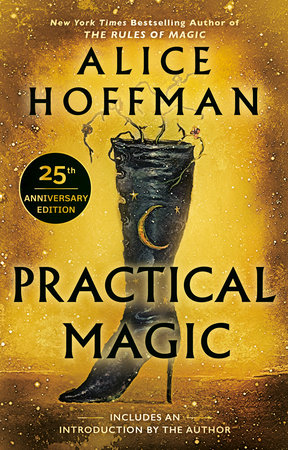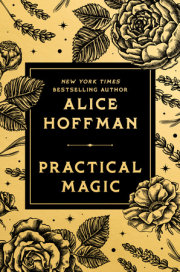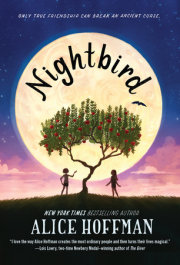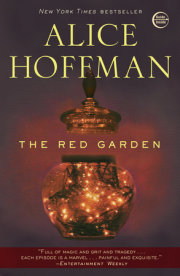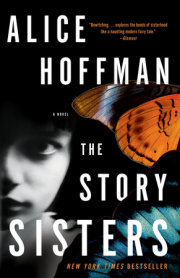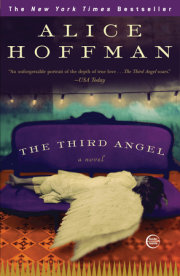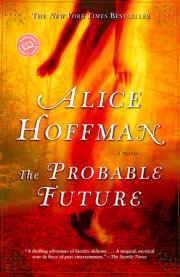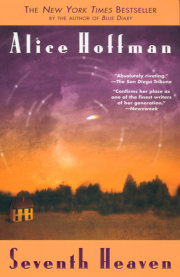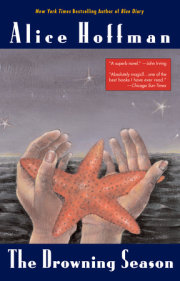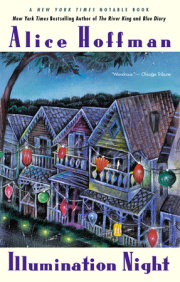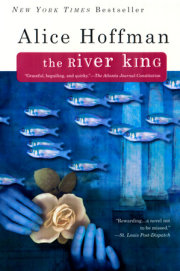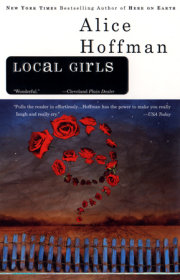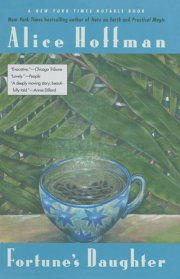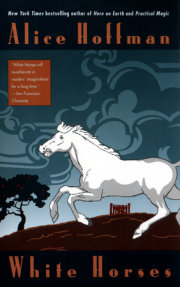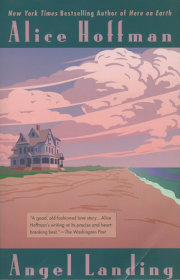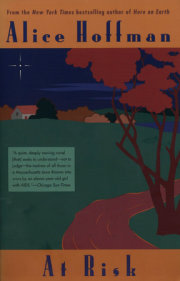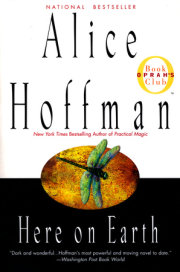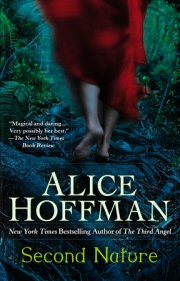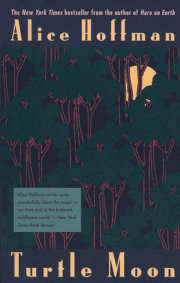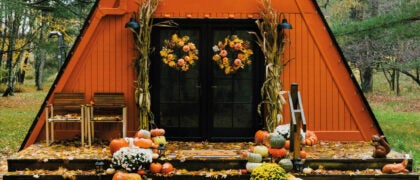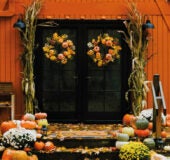INTRODUCTION
In the world of
Practical Magic, lilacs bloom overnight, the real and the magical overlap, and the Owens women have been witches for generations. This novel is an attempt to unlock the secrets of the human heart. What price are we willing to pay for love? How do we recognize and understand our truest selves? How does our past affect our present? Many of us know what it’s like to try to escape a family legacy of one sort or another, only to discover that in the long run we carry our heritage with us no matter how far we might run. The Owens family is one in which the women will do anything for each other; they may argue, they may disagree, but they are fiercely devoted to one another.
Witches are outsiders, and those among us who have been bullied and ostracized can relate to their plight. Part of our fascination with witches is that they are the only female mythic figures with power. These are women who don’t need to be rescued by a prince or a king but, instead, can save themselves—sometimes with the help of a sister. They are wise and fearless women of courage. In short, they are everything little girls wish to grow up to become. In both
Practical Magic and its prequel,
The Rules of Magic, girls are always encouraged to choose courage, and Courage Tea is the aunts’ most treasured remedy.
Practical Magic is the mythic reconfiguration of the journey most women must make, whether they are sisters, mothers, daughters, or aunts.
The Owens women practice magic in the modern world. Sally is the steady older sister who yearns for a “normal” life. Gillian is the wild, unpredictable younger sister who searches out danger. Although they are opposites, each is wary of love, for they have seen lovestruck women come to their aunts for potions and remedies. The original Owens ancestor, Maria Owens, after being abandoned by one of the magistrates at the Salem witch trials, called down a curse upon her family to protect them from the troubles of love. Sally and Gillian know that they carry Maria’s curse. Both must fight for love in a world that is more dangerous when you open your heart, but which is also more meaningful and joyful once you do. The sisters can’t escape magic any more than they can escape love, and in the end they realize this is a blessing rather than a curse.
Twenty-five years after its publication, I am delighted to say that
Practical Magic lives on. Just as there are three generations of women in the novel, the book has been embraced by three generations of readers. I’ve met daughters and mothers and grandmothers who have shared the novel, and nothing brings me more joy than to know that
Practical Magic is a family affair. This is a book about magic, but more importantly, it’s an ode to sisterhood and family, and to the power of love.
Readers have said that when they return to
Practical Magic for a second or third reading, they experience the novel in a completely different way than they did the first time around. The meaning of the book changes for them depending on the stage of their life. The family dynamics are complex; and as often happens in our own lives, how we view the people close to us, even when they are fictional characters, depends on where we stand in the world at that time.
Over the years, readers have asked for another novel about the Owens women. My interest in personal history led me to go back in time and write a prequel rather than a sequel.
The Rules of Magic tells the story of the aunts from
Practical Magic, Franny and Jet, when they are young and first experience their own magical awakenings. I wanted to explore how Franny and Jet became the wise, beloved aunts in
Practical Magic. The young Franny is a beautiful red-haired girl, fearless and confident in her powers; the young Jet is wounded in love but still willing to open her heart. The aunts are raised—without any knowledge of their magical family history—in the sixties, a magical and revolutionary time in New York, the time and place I had known as a girl. It was a pleasure to go back to the sixties and discover how the aunts had lived their lives, both magically and practically. It was also a pleasure for me to return to Greenwich Village as a researcher and revisit the landscape of my own youth. The novelist can be the last to know what a novel is about, and I’m often surprised by the turns in my own stories and by the choices my characters make. Franny and Jet’s brother, Vincent, has a story that neither he nor I would have predicted, one that is at the heart of
The Rules of Magic. I start writing a novel with a question I need answered.
Practical Magic addresses serious questions about the place of women in our society—questions that are as important, or more so, than they were twenty-five years ago. Unfortunately, over the past quarter century, the place of a woman in society has not moved forward as we had wished, then and now. There are still many of the same issues left to address: equal pay, childcare, healthcare, sexual assault. Magic may not be able to right these wrongs, but sisterhood just might. The years have only intensified the importance of telling women’s stories, and doing our best to ensure that women who have been forced to be silent can speak and tell their own truths.
Fortunately, the Owens women spoke to me. It was as if they had walked through the door and all I had to do was chart their histories. I loved magic from the start, beginning with the stories my Russian grandmother told me. If “magic” was in the title of a book, I was bound to find it. In the world of fairy tales, the amazing is recounted in a matter-of fact tone, with the practical and the magical living side by side. One day there is a knock at the door, or a rose that blooms through the winter, or a spindle that must be avoided at all costs. It was the melding of the magical and the everyday that was most affecting to me as a reader, for the world I lived in seemed much the same. People you loved could disappear, through death or divorce; they could turn into heroes or beasts. My personal experience and my childhood reading left me longing for a world in which anything could happen, magic or not, on an ordinary day.
More and more readers have come to feel that magical literature is the original form of storytelling, including fairy tales, folktales, myth, and modern fiction. If I were to write
Practical Magic today, I would begin in exactly the same way as I did twenty-five years ago.
For more than two hundred years, the Owens women have been blamed for everything that has gone wrong in town.
There are those who have come to the book after watching the film version of
Practical Magic, which has become a much loved cult movie and boasts one of the most exceptional casts of women ever gathered: Sandra Bullock, Nicole Kidman, Stockard Channing, Dianne Wiest, Evan Rachel Wood, Camilla Belle, Chloe Webb, and Margo Martindale. It’s a rare film that is so chock-full of interesting female characters who argue, form friendships, hurt one another, and support each other. The film is great fun, but it doesn’t avoid the darkness in the story: Gillian’s history of abuse resonates, as does Sally’s emotional journey of love and loss, which leads her to understand that the only chance for happiness is to be true to herself.
At this writing, I am beginning a third magic book about Maria Owens,
Magic Lessons, going even further back in time, charting the initial history of the Owens family and their magical abilities. I can’t wait for readers to discover the origins of the family, and I can’t wait to discover it for myself. The story may surprise me, and I expect it will take on a life of its own, but I know that within it I will find that once upon a time, there was a woman or a girl who was different, who was an outcast, who looked for beauty in the world, who was wounded, who fell in love despite the warnings, who would do anything for her sister or her niece or her daughter or her mother, who knew that despite the dangers, we must fall in love whenever we can.
SUPERSTITION
For more than two hundred years, the Owens women have been blamed for everything that has gone wrong in town. If a damp spring arrived, if cows in the pasture gave milk that was runny with blood, if a colt died of colic or a baby was born with a red birthmark stamped onto his cheek, everyone believed that fate must have been twisted, at least a little, by those women over on Magnolia Street. It didn’t matter what the problem was—lightning, or locusts, or a death by drowning. It didn’t matter if the situation could be explained by logic, or science, or plain bad luck. As soon as there was a hint of trouble or the slightest misfortune, people began pointing their fingers and placing blame. Before long they’d convinced themselves that it wasn’t safe to walk past the Owens house after dark, and only the most foolish neighbors would dare to peer over the black wrought-iron fence that circled the yard like a snake.
Inside the house there were no clocks and no mirrors and three locks on each and every door. Mice lived under the floorboards and in the walls and often could be found in the dresser drawers, where they ate the embroidered tablecloths, as well as the lacy edges of the linen placemats. Fifteen different sorts of wood had been used for the window seats and the mantels, including golden oak, silver ash, and a peculiarly fragrant cherrywood that gave off the scent of ripe fruit even in the dead of winter, when every tree outside was nothing more than a leafless black stick. No matter how dusty the rest of the house might be, none of the woodwork ever needed polishing. If you squinted, you could see your reflection right there in the wainscoting in the dining room or the banister you held on to as you ran up the stairs. It was dark in every room, even at noon, and cool all through the heat of July. Anyone who dared to stand on the porch, where the ivy grew wild, could try for hours to look through the windows and never see a thing. It was the same looking out; the green-tinted window glass was so old and so thick that everything on the other side seemed like a dream, including the sky and the trees.
The little girls who lived in the attic were sisters, only thirteen months apart in age. They were never told to go to bed before midnight or reminded to brush their teeth. No one cared if their clothes were wrinkled or if they spit on the street. All the while these little girls were growing up, they were allowed to sleep with their shoes on and draw funny faces on their bedroom walls with black crayons. They could drink cold Dr Peppers for breakfast, if that was what they craved, or eat marshmallow pies for dinner. They could climb onto the roof and sit perched on the slate peak, leaning back as far as possible, in order to spy the first star. There they would stay on windy March nights or humid August evenings, whispering, arguing over whether it was feasible for even the smallest wish to ever come true.
The girls were being raised by the aunts, who, as much as they might have wanted to, simply couldn’t turn their nieces away. The children, after all, were orphans whose careless parents were so much in love they failed to notice smoke emanating from the walls of the bungalow where they’d gone to enjoy a second honeymoon, after leaving the girls home with a babysitter. No wonder the sisters always shared a bed during storms; they were both terrified of thunder and could never speak above a whisper once the sky began to rumble. When they did finally doze off, their arms wrapped around each other, they often had the exact same dreams. There were times when they could complete each other’s sentences; certainly each could close her eyes and guess what the other most desired for dessert on any given day.
But in spite of their closeness, the two sisters were entirely different in appearance and temperament. Aside from the beautiful gray eyes the Owens women were known for, no one would have had reason to guess the sisters were related. Gillian was fair and blond, while Sally’s hair was as black as the pelts of the ill-mannered cats the aunts allowed to skulk through the garden and claw at the draperies in the parlor. Gillian was lazy and liked to sleep past noon. She saved up her allowance money, then paid Sally to do her math homework and iron her party dresses. She drank bottles of Yoo-Hoo and ate goopy Hershey’s bars while sprawled out on the cool basement floor, content to watch as Sally dusted the metal shelves where the aunts kept pickles and preserves. Gillian’s favorite thing in the world to do was to lie on the velvet-cushioned window seat, up on the landing, where the drapes were made of damask and a portrait of Maria Owens, who had built the house so long ago, collected dust in a corner. That’s where she could be found on summer afternoons, so relaxed and languid that moths would land on her, mistaking her for a cushion, and proceed to make tiny holes in her T-shirts and jeans.
Sally, three hundred ninety-seven days older than her sister, was as conscientious as Gillian was idle. She never believed in anything that could not be proven with facts and figures. When Gillian pointed to a shooting star, it was Sally who reminded her that what was falling to earth was only an old rock, heated by its descent through the atmosphere. Sally was a take-charge sort of person from the start; she didn’t like confusion and mess, both of which filled the aunts’ old house on Magnolia Street from attic to cellar.
From the time she was in third grade, and Gillian in second, Sally was the one who cooked healthy dinners of meat loaf and fresh green beans and barley soup, using recipes from a copy of Joy of Cooking she’d managed to smuggle into the house. She fixed their lunchboxes each morning, packing up turkey-and-tomato sandwiches on whole-wheat bread, adding carrot sticks and iced oatmeal cookies, all of which Gillian tossed in the trash the instant after Sally deposited her in her classroom, since she preferred the sloppy joes and brownies sold in the school cafeteria, and she often had swiped enough quarters and dimes from the aunts’ coat pockets to buy herself whatever she liked.
Night and Day, the aunts called them, and although neither girl laughed at this little joke or found it amusing in the least, they recognized the truth in it, and were able to understand, earlier than most sisters, that the moon is always jealous of the heat of the day, just as the sun always longs for something dark and deep. They kept each other’s secrets well; they crossed their hearts and hoped to die if they should ever slip and tell, even if the secret was only a cat’s tail pulled or some foxglove stolen from the aunts’ garden.
Copyright © 2003 by Alice Hoffman. All rights reserved. No part of this excerpt may be reproduced or reprinted without permission in writing from the publisher.




